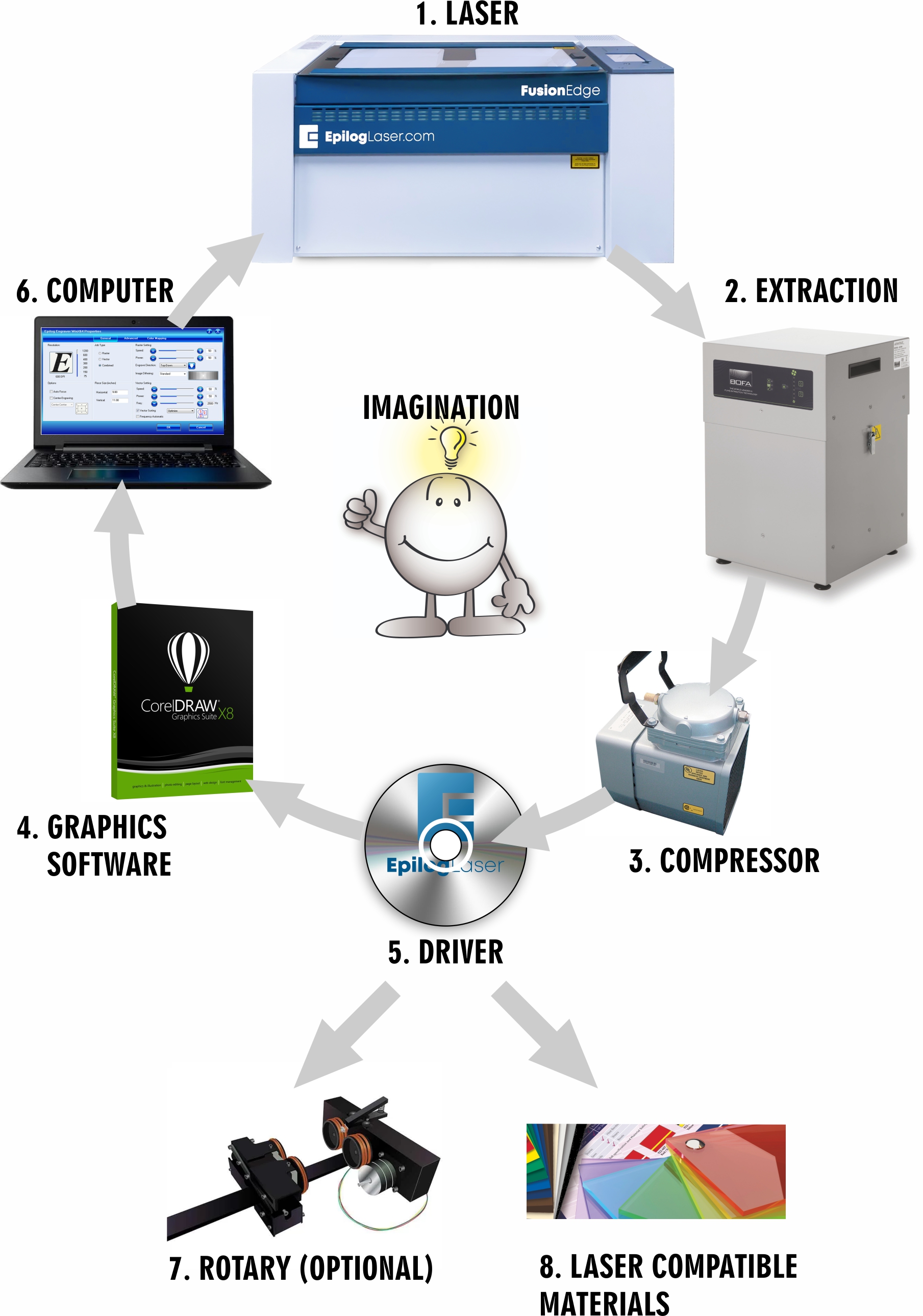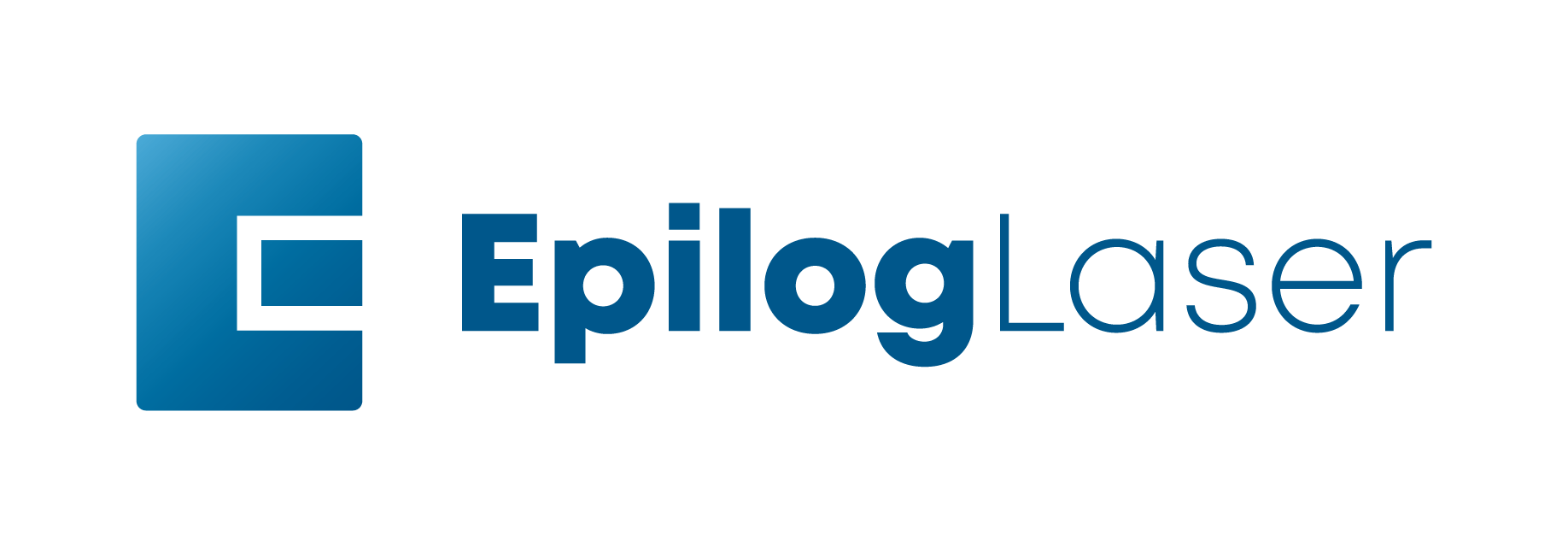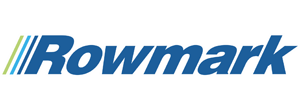WHAT IS A LASER?
The word LASER is an acronym for Light Amplification by Stimulated Emission of Radiation. In basic terms, it is a source of light energy that is concentrated in a small area using a series of mirrors and a lens. Rather like concentrating the energy of the Sun through a magnifying glass to burn a hole in paper on a hot summer's day!
WHAT CAN IT DO?
The beam of light from the laser tube is intensified when focused through an optical lens which essentially burns materials in its path. This means we can mark, engrave (Raster) or cut (Vector) a variety of materials. (see chart below) The width of this beam varies with the size of the lens but typically a 2” lens will produce a beam-width of 0.127mm! You can engrave text, logos, photos and cut any 2D shape imaginable.
WHAT DO I NEED TO GET STARTED?
Laser machines are available in a range of sizes and wattage, but the components are generally the same. A typical laser system will consist of the following:


Laser
Think of a laser machine as you would a standard home or office printer but using light energy instead of ink. To set the laser simply place the material on the bed and focus the lens either manually or automatically (depending on the model) by raising or lowering the table. There is no need to clamp or hold this material as there are no mechanical forces coming into contact. However, you want to have the material as flat as possible and parallel to the lens. Laser systems are available in a range of sizes and power options but fundamentally all produce the same results albeit larger and quicker. Create your image as you would for a normal document in black and white and then send it to print on the laser via the print driver or 'Dashboard'

Extraction
This is a critical component of any laser set up and needs to be adequate for the cabinet size. It will not only keep your laser cabinet clean but more importantly protect you from potential harmful gasses and fumes or VOC’s (Volatile Organic Compounds) that are created during the lasering process. The extraction system draws fume through a pre-filter removing the larger particles and then through a further combined filter which removes harmful Nano particles. The air flow is rated in Cubic Feet per Minute (CFM). These systems are self-contained and do not require ducting to the outside air however, filters will need replacing periodically.


Compressor
A small compressor (30psi) is connected to the air assist on the laser. It directs a constant stream of air onto the surface of the material at the point of contact. This reduces flaring and helps to remove combustible gasses when cutting.


Graphics Software
Epilog laser systems do not require proprietary software. They are open architecture which means you can use most mainstream graphic software i.e. Corel Draw, Illustrator, AutoCAD, Inkscape etc. To create your images and then send them directly to print on the laser via the Epilog driver (dashboard). To cut, you will need a vector based graphic, such as an .eps or Illustrator file and again if you can create it the laser will cut it! Keep in mind the higher the quality of the graphic you're working with, the better your engraving results.


Driver
The driver (dashboard) software controls the laser. The two main parameters that are used in any job are SPEED at which the laser head travels and POWER emitted from the laser tube. It’s like putting your finger through a candle flame, if you do it quickly it will be warm but slow it down and it will burn more! Adjusting these parameters will determine the depth of both the engraving and cutting. A superior quality driver is essential for control and ease of use.


Computer
You don’t need a lot of computer power to run a laser. Your average off the shelf laptop is more than capable of running a system. However, you may need something with a little more power if you are doing a lot of images as these can be large files. The Epilog driver is designed to work with all versions of Windows 2000, XP, Vista, 7, 8 and 10 operating systems. The Fusion Laser Series is also compatible with Mac operating systems OS X 10.7 and higher. Your laser can be connected via USB or Ethertnet (recommended).


Rotary Device (optional)
You can engrave onto cylindrical items using a rotary attachment. These devices are extremely user friendly, easy to fit and accommodate various diameters depending on the laser model.


Laser Compatible Materials
Hydrogen Chloride and Vinyl Chloride (mostly found in PVC and other man made materials) are hazardous to the life of your laser system. Engraving and cutting these materials can cause irreversible damage to your machine, so determining the components of your cutting and engraving materials is extremely important. Materials, such as Kydex, contain PVC. Try to determine the chemical makeup of any product prior to lasering. Where possible request a Material Safety Data Sheet (MSDS). This sheet is designed to provide the proper procedures for handling or working with a substrate and contain the elements used to make up the material. It will also indicate whether it contains elements that are potentially harmful to you or your engraving system. For material supplies go to our Materials and More section.

Our Partners
Our partners offer an excellent range to help us to bring our customers the best solutions.


 EUR (€)
EUR (€)










